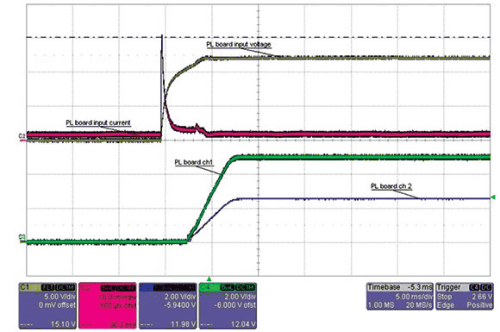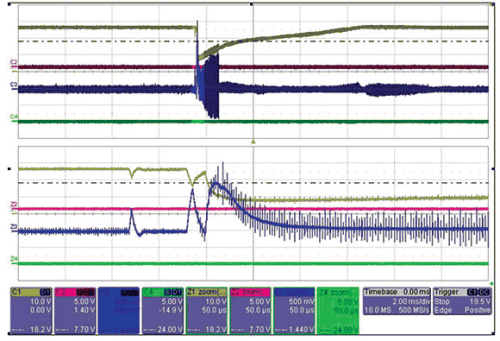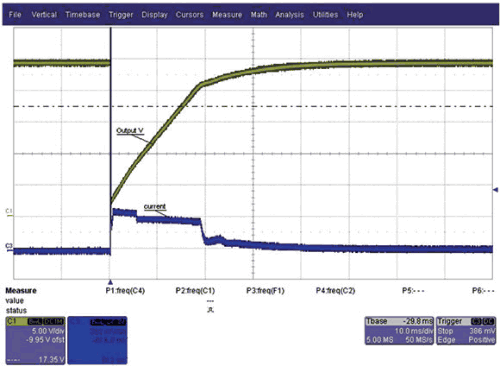
Non-linear loads, in the context of a power supply, are those that do not behave like an ideal resistor, such as point of load (POL) DC-DC converters and discharged capacitors that are switched onto the output, causing high currents to flow until the capacitor is charged.
Current-limit protection, or Over-Current Protection (OCP), is an essential design feature for a power supply; the techniques used include constant-current, foldback and hiccup. Of these three types, the favoured technique is hiccup current limit even though, in some cases, the circuitry to achieve this can be quite complex in nature. Upon detection of an over-current event, the whole power supply shuts down for an interval before it tries to power itself up again (auto restart). The cycle repeats, or hiccups, until the over-current fault disappears.



The benefit to the equipment manufacturer using a power supply with hiccup current limit is that it can accommodate peak power conditions and the cable does not need to be rated at this higher peak current. Power supplies using simple analog control circuitry would typically have fixed timing for the hiccup, but digitally controlled power supplies can employ load dependent timing. Typical values are 10 s on-time for an overload condition, around 60 ms for heavy overloads and approximately 5 ms for a short-circuit condition. Off-times would typically be 1 to 2 seconds.
Figure 1 shows the start-up of an AC-DC power supply with hiccup current limit starting into a POL converter load; the yellow curve shows the output voltage and the red curve shows the current. During start-up, there is a large inrush current from the capacitors of about 150 A peak – although this inrush current is very high, it is occurring during the soft-start phase of the AC-DC power supply and is of short duration, so the power supply remains unaffected. The soft start-up characteristic of the power supply is optimised to handle this kind of inrush current and, provided that the peak occurs before the voltage comes into regulation, it’s not a problem. It can be a problem, however, when this occurs once the regulated voltage is established and the reason for this is the hiccup current limit.
In the waveforms shown in Figure 2, the blue trace shows the current supplied by the AC-DC power supply as a discharged, low-impedance capacitor is switched onto the established output. As you can see, the power supply has turned on three times – this happens because the relay bounces. At just under 60 A, there’s about 700 W being drawn from the power supply, which could cause a standard power supply to hiccup, thus preventing correct start-up of the load. In this case, however, the output does recover as can be seen by the yellow trace.
The design team at TDK-Lambda improved the hiccup current limit algorithms when it introduced the CFE series. The waveform in Figure 3 shows the CFE400M running at 24 V; when a 3000 µF capacitor is switched in, it discharges the output to almost zero (yellow trace) as it discharges the much smaller output capacitor on the product.
As you can see, the CFE is optimised to deal with this large switched capacitive load, supplying almost 50 A of output current for about 1,5 ms (in short-circuit mode) and then dropping down to a lower level of about 30 A (over-current protection mode) for approximately 50 ms, which is typically long enough for the voltage to recover.
The CFE400M can run at 300 W and have the 3000 µF capacitance switched in and still recover without going into hiccup; thus offering the benefits of hiccup current limiting, such as a 150% peak-power capability with reduced cable size requirements, whilst still being able to handle highly non-linear loads normally associated with power supplies having constant-current type OCP.
| Tel: | +27 11 782 8728 |
| Email: | [email protected] |
| www: | www.accutronics.co.za |
| Articles: | More information and articles about Accutronics |

© Technews Publishing (Pty) Ltd | All Rights Reserved